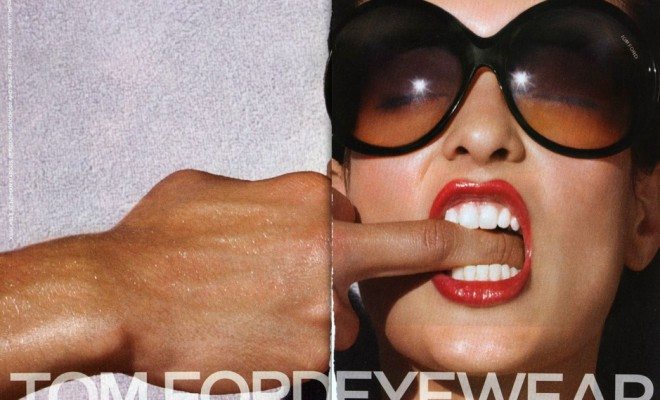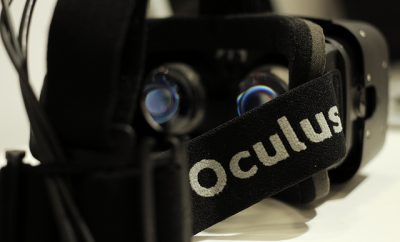
Blogs
Censorship in Fashion: Where Did All the Controversial Ads Go?
When it comes to marketing, they say that sex sells. That may have been true ten years ago when retailers like Abercrombie & Fitch, Calvin Klein, and United States of Benetton ruled the fashion scene. But lately the industry seems to be erring on the safe side in advertising. Maybe this is why controversial photographers like Dov Charney and Terry Richardson have recently gotten the boot. Maybe it’s a movement in feminism. But maybe it’s just censorship.
The sexualized female figure has shocked the public since the Impressionist Era. The censorship of the female nipple is nothing new; however, as in art, it’s this same kind of scandal that often gives companies the most attention, which is basically the point of advertising. The more people are talking about a company, the more money they make. There is no such thing as bad press. So why are so many ads playing it safe these days?
One reason for this could be that companies just don’t want to bother with all the hassle. If an ad is too controversial, it risks getting banned in some countries. For example, back in 2011 the U. K.’s Advertising Standards Authority (ASA) seemed to read a little too much into Dakota Fanning’s ad for Marc Jacobs’ perfume Lola, resulting in a ban throughout Great Britain. The ad features Fanning with the perfume bottle, which includes a large rubber rose on the cap, between her legs. At the time the ad ran, Fanning was only 17 so it upset people to see a minor, whom the ASA claimed looked under the age of 16, staring in such a “provocative” ad.
Marc Jacobs, however, seems hardly controversial compared to other retailers such as Benetton and Italian label Sisley. These companies are notorious for making cheap shots when it comes to advertising. For these two, the more scandalous, the better: from a kissing nun and priest to a man dying of AIDS to “fashion junkies” snorting a dress. Despite their tendencies to upset the public, these ads have been successful in garnering attention. In such cases, these companies value shock factor over just putting out a pretty ad.
Benetton has become tamer since photographer Oliver Toscani stopped working with the company in 2000. Their recent Unhate campaign featuring feuding world leaders kissing, like President Obama, Venezuelan leader Hugo Chavez, Pope Benedict XVI , and Egyptian leader Grand Sheikh Ahmed el Tayeb, led to the Vatican suing back in 2011.
Another reason ads may have tamed down is that companies now do most of their marketing through social media. Sites like Facebook and Instagram are heavily regulated when it comes to what they determine is appropriate for such a large and diverse audience. Most pictures featuring the female nipple are promptly removed from these sites within hours of posting. Therefore, if an ad is considered too inappropriate, the company risks losing a large amount of consumers.
Although sometimes they make more than one version of an ad through strategic cropping, companies, especially smaller ones that can’t afford it, may not want to bother paying for multiple versions of the same campaign. Social media also allows for free advertising for all kinds of companies and can be shared to reach consumers who may not normally pay attention to a specific brand. While Benetton’s ads certainly have a tendency to go viral, they risk running into potential legal troubles on the web. If an ad ends up on a site with certain regulations, the company could be held accountable.
Online advertising has presented endless opportunities for giving companies exposure but at the same time, advertising has also never been more censored. There are few laws to regulate what is appropriate and what is not online, so it is often up to the websites themselves to make the regulations. Many sites do not want to face the legal complications involved with featuring controversial images, which in turn has led advertisers to not even bother with anything controversial in the first place.
While Benetton may not offer anything groundbreaking or artistically ingenious in its ads, the company is known for opening up a conversation about greater issues such as HIV/AIDS, homophobia, and racism. Lately however, there is not much conversation going on regarding these kinds of ads, just a bunch of pretty models in pretty clothes. While the point of fashion advertising is to sell clothes, sometimes the less clothing a model wears, the more intrigued a consumer may be to find out what kind of product the ad is selling. The use of accessories in fashion ads also creates a more timeless image, which is bound to be remembered and used for decades.
Perhaps advertisers should start taking cues from the Impressionists again, instead of playing it safe. The Impressionists lucked out though, because there was no ASA or Facebook back then to stop them from creating anything interesting.
Of course full-on nudity isn’t the only way to intrigue an audience with sex appeal. Let us not forget the classic Brooke Shields for Calvin Klein ads, who was just 15 at the time.
Nothing, not even the ASA could get between her and her Calvins.
—
Katherine Fabian (@kafernn) is a recent graduate of Fordham University’s College at Lincoln Center and is currently applying to law schools, freelance writing, and teaching yoga. She hopes to one day practice fashion law and defend the intellectual property rights of designers.
Featured image courtesy of [Buzzfeed]









Comments